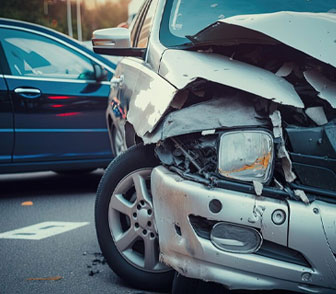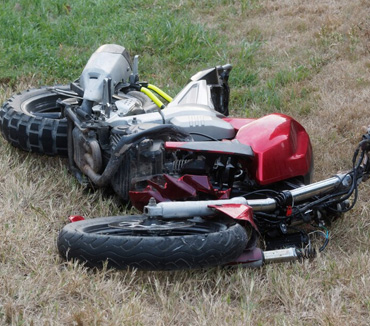What Should I Do After Being Involved in a Hit-and-Run?
Being involved in a car accident is stressful enough, even when both parties exchange insurance information and there are no serious injuries involved. But what happens if you have been the victim of a hit-and-run? Sadly, hit-and-run accidents are more common than you might think. Evidence suggests the number of hit-and-run incidents are increasing.
What Constitutes a Hit-and-Run in California?
In California, a hit-and-run is any accident in which a driver leaves the scene without providing contact information to the other driver. In a more serious accident, this could mean leaving the scene before the police arrive.
Drivers are also expected to provide “reasonable assistance” to others in order to receive medical attention if necessary, such as calling for an ambulance. The only exception to this is if you leave the scene in order to receive medical care for yourself or someone else. However, even in these cases, it is best to give your name and contact and insurance information to the other driver before heading to the hospital.
Keep in mind that the act of committing a hit-and-run is not defined by who was at fault. So even if you are not at fault in an accident, if you leave the scene without contacting the other driver, you have committed a hit-and-run. Also keep in mind that running away suggests a measure of guilt, and it may be harder to convince your insurance company that you were not responsible for the accident.
Steps to Take After Being Involved in a Hit-and-Run
1. Pull Over Immediately and Safely
Do not attempt to chase or apprehend the other driver, as this can make the situation exponentially worse. Leaving the scene of the accident could put you in a compromising position; you will miss getting eyewitness accounts and police can also charge you with hit-and-run.
2. Once Parked, Call the Police Immediately
Do not wait to call the police or your insurance company to file a police report or an accident claim. The official accident report will help police look for the missing driver and will be useful when you file your accident claim. Failing to contact the police, even if you do not have a description or license plate number of the vehicle that hit you, can result in your insurance company dragging out the claims process or denying it altogether.
3. Gather Evidence
While it is still fresh in your mind, write down everything you can possibly remember: what happened immediately before and after the collision, and any details about the other vehicle. The license plate number is most important, though it is not always easy to get in these types of situations. Having the plate number makes it much more likely your deductible will be reimbursed by your insurer.
When faced with a hit-and-run, it can be particularly important to take pictures of your vehicle showing the damage from all necessary angles, as well as pictures of the area where the incident occurred. Aim for image quality over quantity.
Get as much information about the driver, car and accident as possible, including:
- License plate number
- The other vehicle’s make, model and color
- Description of damage to the other vehicle
- Which direction the other vehicle was headed
- Photos of the damage to your vehicle
- Location, time and cause of the accident
4. Look for Witnesses
Seek out witnesses, such as nearby store owners or home owners who may have surveillance video footage of the accident. Write down their stories and contact information. If a witness wrote down the license plate number of the person who hit your car, you can file a police report. You should also submit the plate number to your insurer, who would then try to recover your deductible costs from the responsible party.
Ask witnesses if they can supply additional information about the accident. If they give you or the police a statement, be sure to get their names and contact information. Witness information can be especially helpful if the hit-and-run occurred when you were not with your vehicle.
5. Contact Your Insurance Company
After filing the police report, you will want to file a claim with your insurance company if you have the right coverage. Since you do not have the other driver’s insurance information, you will have to enact your underinsured or uninsured portion of your auto policy. Most states have required minimums for coverage, but your insurance company may recommend more. Check with your insurance company for exact policy conditions. Keep in mind you will have to pay the deductible to cover the cost of repairs, unless the perpetrator is caught.
6. Seek Medical Attention
Be sure to seek medical attention right away and keep all records of your accident and injury-related expenses. Also log all time spent out of work and all lost pay, if applicable.
Filing a Police Report
In many cities, a police officer will only report to an accident scene if there have been injuries. If you are involved in a hit-and-run in one of these areas, you will have to go down to the police station to file a report. Do not neglect this step, even if you think the chances of finding the other driver are slim. Provide as many details as possible to aid law enforcement. Even if they do not catch the perpetrator, having a police report on file will assist you with your insurance claim.
Contact an Experienced Personal Injury Attorney
Drivers may flee the scene of an accident for a variety of reasons – because they were intoxicated, they did not have insurance, etc. While none of this is fair to you, you can still take steps to help bring about a speedy resolution to your claim.
Issues involving hit-and-run drivers can be complicated. That is why you should contact an experienced personal injury attorney to help you with your claim. Please contact our Personal Injury Attorneys at 1-877-241-9554 to learn more about your legal options. A free consultation is just a phone call away.
Request A
Free Consultation
Fields Marked With An ” *” Are Required










